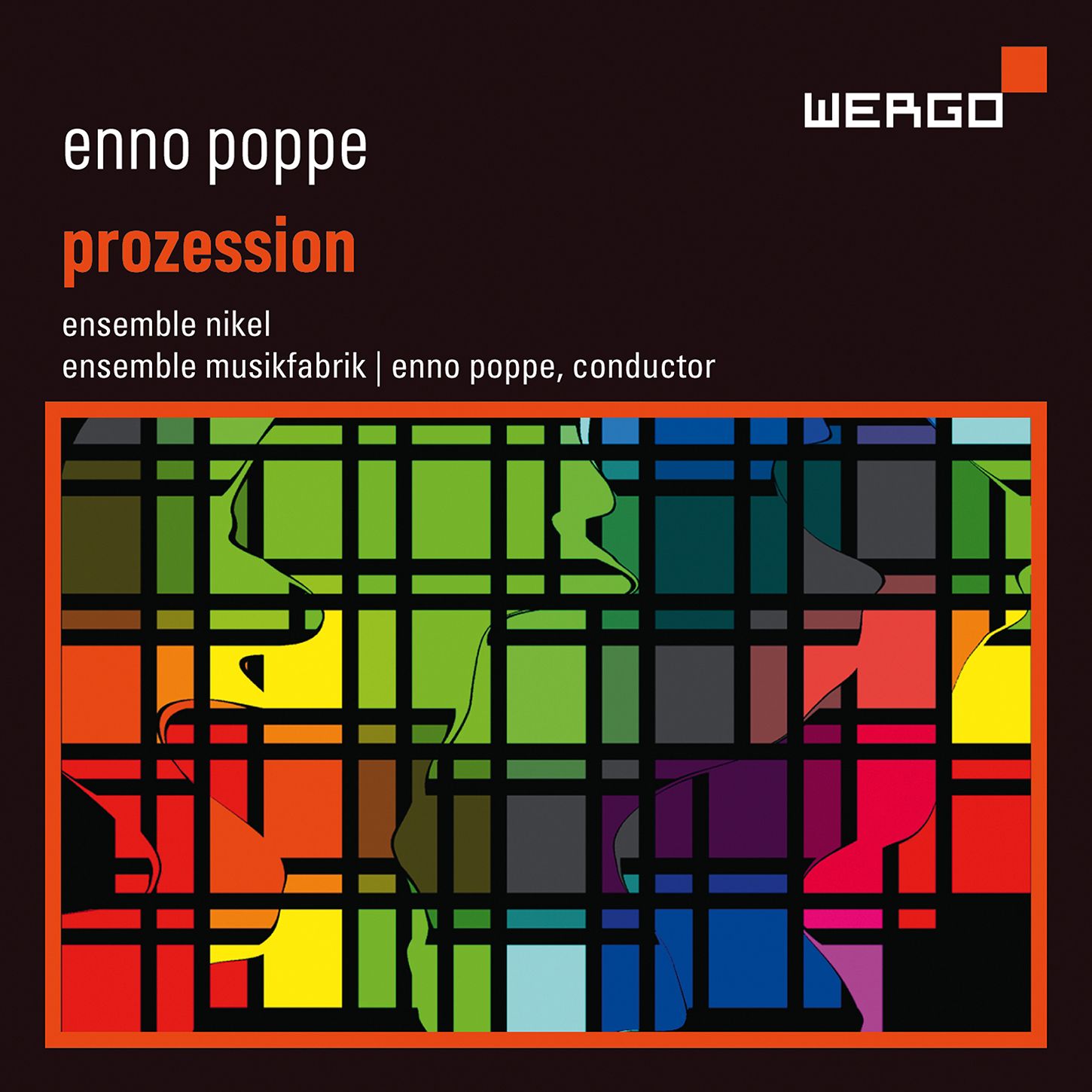More Enno Poppe: Prozession
This disc acts as a vital reminder of the importance of Enno Poppe’s music

We have posted on Enno Poppe (brn 1969) a couple of times before on Classical Explorer: his piecesFett and Ich kann mich nichts erinnern on BR Klassik, and as a conductor of the EnsembleKollektiv (part of the 2022 Berlin Festival).
The new album features two ensemble pieces, performed by two new music groups closely associated with the composer: Ensemble Musikfabrik and Ensemble Nikel (a quartet of saxophone, electric guitar, percussion and piano).
In the three-movement piece Fleisch (2017, receiving its World Premiere recording here), Poppe takes the the "sounds" and playing gestures of pop and rock music as a starting point, and embraces them within his own sound universe. He uses microtonal effects, and Moog synthesiser sounds, without any contradiction.
Poppe himself in the booklet interview acknowledges the idea of the piece as a collage: segments of music can be juxtaposed, minus transition. Perhaps the debt to the original rock sounds is most evident in the first movement:
... while, to me, the final movement sounds more like Poppe’s take on contemporary jazz:
In the middle comes a completely different set of sounds. As Poppe says:
The second movement grows out of its melodies. It's based on a kind of jazz standard, wlthough I came up with teh blues and rhythm scheme myself. There is a sexophone solo followed by a refrain with sax and electric guita; then there is a guitar solo and the refrain again. At the end, there is a chord passage together with the synthesizer, and that's it. It is actually a very simple form.
Here is a video of the World Premoere of Fleisch, from the Bludenzer Tage Zeitgenossener Musik, 2017:
Enno Poppe wrote the rhythmically concise piece Prozession for the Ensemble Musikfabrik. For almost an hour, the work leads through various instrumental combinations along a continuous chain of differentiated rhythmic impulses of a large percussion section, only to mysteriously dissolve into natural sounds at the end.
Four percussionists are placed at he four corners of the stage; a group with electric guitar and two dual-manual Korg BX3 synthesizers sits in the middle (“like a basso continuo group,” as the composer puts it - see here for a review of the BX3). One of the members of Musikfabrik, Ulrich Löffler, is a keyboard instrument collector and through him Poppe made this discovery.
Prozession was five years in gestation (2015-20). Originally, in 2015, Poppe planned a piece called Film for large ensemble and synthesizers: the idea actually seeded three pieces: Stoff, Rundfunk, and Prozession. After writing around eight minutes of Prozession, Poppe put the piece aside temprarily. Five years later, he completed it (during the first pandemic lockdown).
Popps is clear about the ceremonial aspect of the music, and perhaps there is an element of speeded-up Birtwistle-in-ritual-mode here (this the result of the inspiration of the “insane” - Poppe’s own word - marches of “Semana Santa” in Spain). Poppe has organised his piece along fractal principles: a matrix determines everyting, from macro- to micro-structire, although the matrix does not determine the actual sonorities used. As Poppe puts it, the fom of the piece “is fractal. It jumps back and forth, but not in one simple direction. Maybe it's more like a spiral”.
The precussion is used also to push the piece forwards, a sort of motor mechanism. Four large marching drums were written expressly for this piece, which use snares so they sound both archaic and exaggerated. The piece ends with a remarkable composed “dissolve” (the interviewer in the booklet refers to this as “the sounds of wind and the sea,” and Poppe approves!).
Here is a complete performance made just a few days after the recording:
This disc acts as a vital reminder of the importance of Enno Poppe’s music. Recommended.
